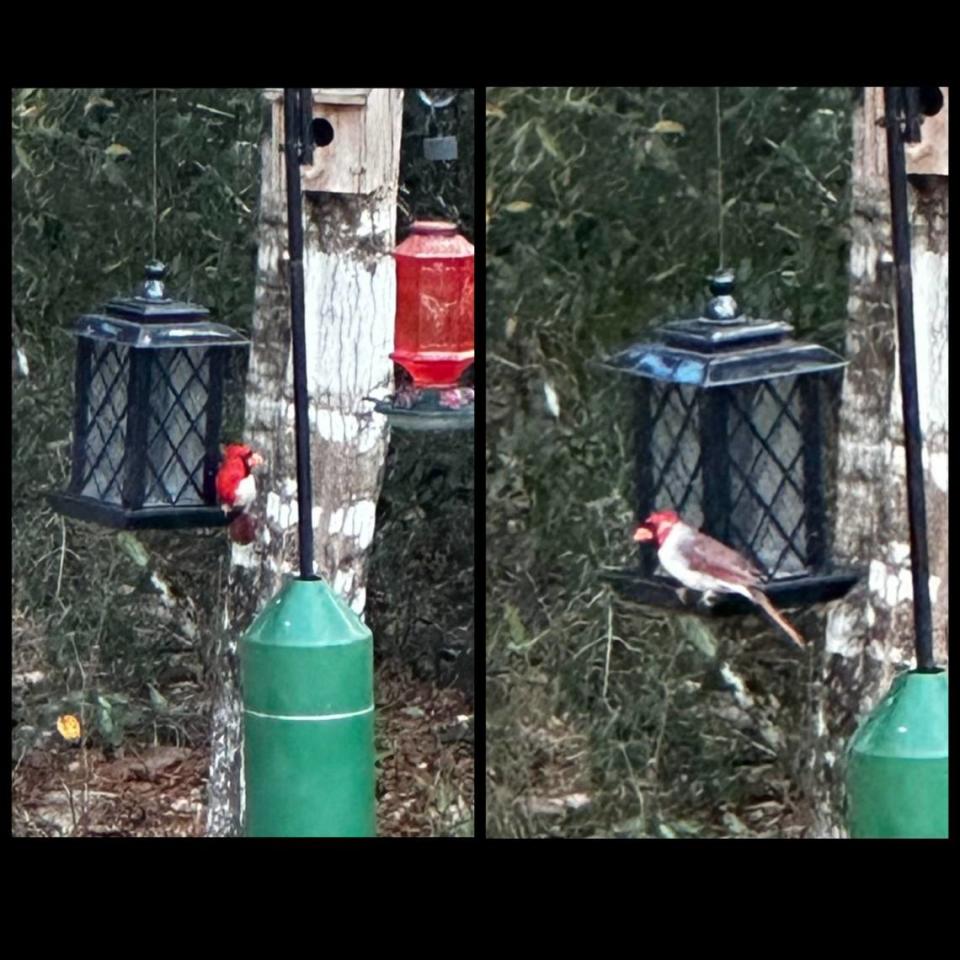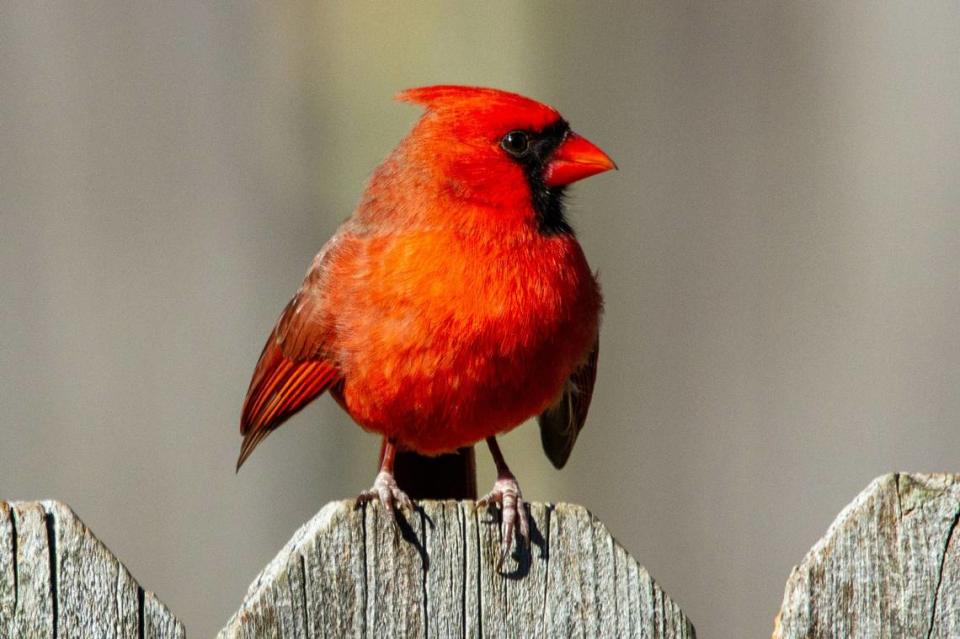Incredibly rare bird — half male, half female — appears in Florida yard. What is it?
When a homeowner in northern Florida looked out at her bird feeders the first weekend in March, she thought she saw a red-headed woodpecker.
There was a brown bird nibbling at the wild bird seed with a bright red head, she told McClatchy News in an interview.
The only problem was its size. It was much too small to be a woodpecker.
Then it turned around.
While one side of the bird was a muted brown color, the other side was bright red, matching the color of its head.

“It’s very, very rare,” ornithologist and ornithology collections manager for the Florida Museum of Natural History, Andy Kratter, told McClatchy News.
A curator of the museum’s bird collection, Kratter has seen hundreds of thousands of specimens, he said, and he has never seen a bird like this.
The rare coloration is called bilateral gynandromorphism, Kratter said, and causes the animal to be male on one side of its body and female on the other.
For the cardinal, the bright red side and the head is male, and the brown side is female.
“What’s going on is that the bird has both male and female gonads, and they are both actively expressed, one on one side and one on the other. There is a hiccup in the developmental process where most animals are one sex and then the hormones eventually come and develop the other sex if those hormones are released,” Kratter said. “For some reason, in these gynandromorphs, it’s only released on one side to change the sex.”
Kratter, who viewed the photos of the cardinal from Levy County, said he’s been birdwatching for 50 years around the world and has not seen a gynandromorph before.
“I’ve read about them, because when they do pop up, people write papers about them,” Kratter said.
Of the split birds that have been spotted before, cardinals rank as one of the most seen, Kratter said, mainly because they regularly go to bird feeders and near homes where observant eyes catch their unique colorations.
It is also more commonly seen in birds like cardinals because they have obvious sexual dimorphism, Kratter said.

Sexual dimorphism is when the male and female of a single species look very different physically. This is relatively common in birds, such as peacocks, turkeys and birds of paradise.
But for species that look the same no matter the sex, it may be impossible to identify a gynandromorph from observation alone.
Kratter said this bird in particular, whose head is also male, is even more unusual among gynandromorphs.
“It’s a little bit unusual, if you look at some of the other pictures online, the birds are really half and half. This one is a little bit more male, kind of the male plumage creeps over onto the left side of the bird on the head,” Kratter said, “But the breast has that nice, even divide, which is a good sign it’s a gynandromorph. … It looks like someone painted it or something, it’s so weird and striking looking.”
Kratter said he wouldn’t be surprised if birders went out to look for the distinctive bird because he’s seen crowds flock to once-in-a-lifetime sightings before.
McClatchy News is not identifying the homeowner or her specific location to protect the bird.
A few years ago, a golden cardinal was spotted on the University of Florida campus, Kratter said. The golden color comes from a genetic mutation in male cardinals and gives the bird rich, yellow feathers instead of red.
Kratter said hundreds of bird enthusiasts traveled to the university for their chance to see the bird.
“(The gynandromorph) I think is even more striking than one of those yellow cardinals and is probably even rarer, and so I think if people had the opportunity to go see it, they would,” Kratter said.
The bird was spotted in central Levy County, about a 120-mile drive north from Tampa.
Huge sea creature breaches as ranger is puzzled by rare silence off California island
‘Unusual’ creature found in dark underwater cave turns out to be a new species. See it
Humongous creature vanished from Atlantic Ocean centuries ago. Now one’s been spotted
Rare sea creatures on ‘impressive journey’ excite officials in New Zealand. See them

